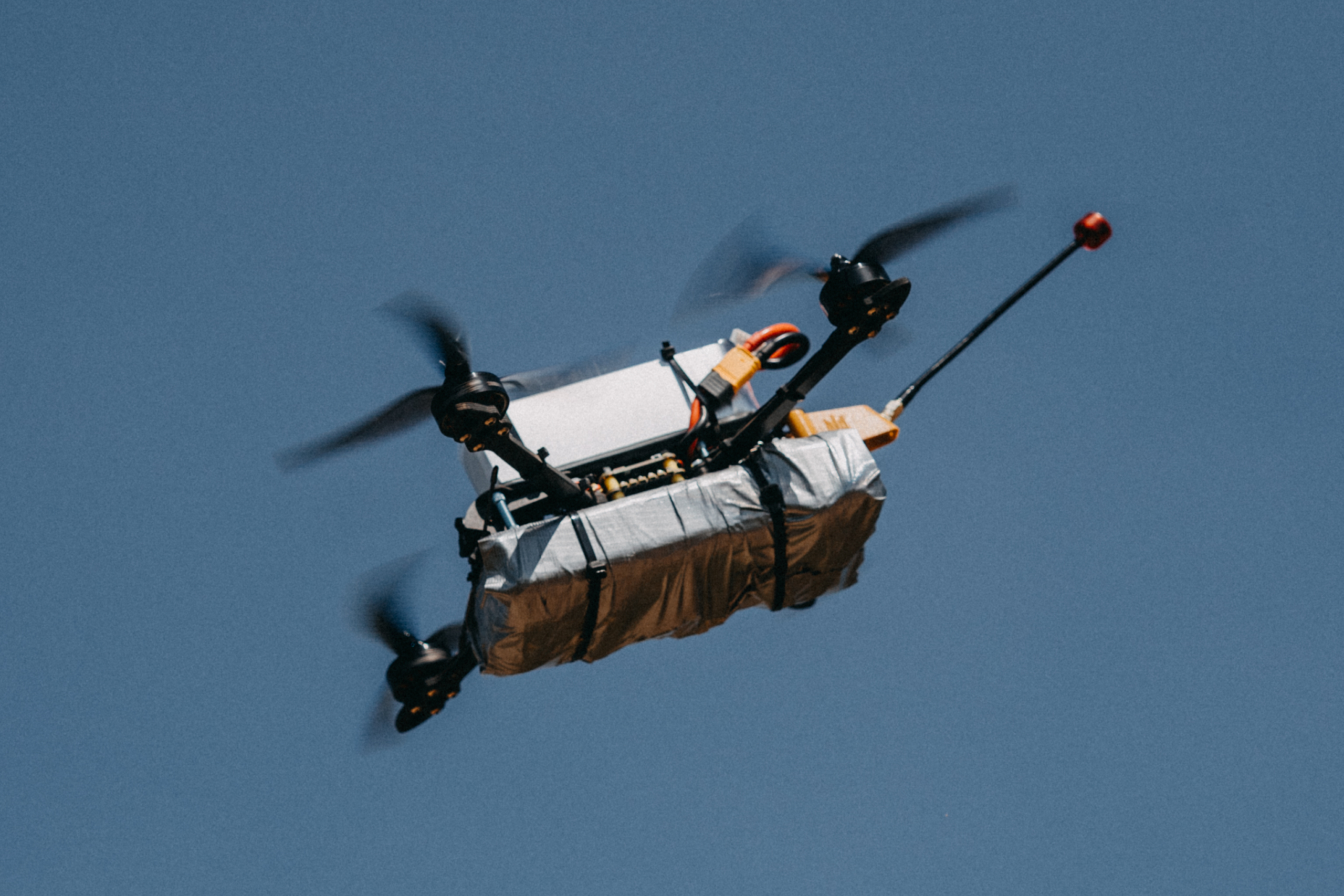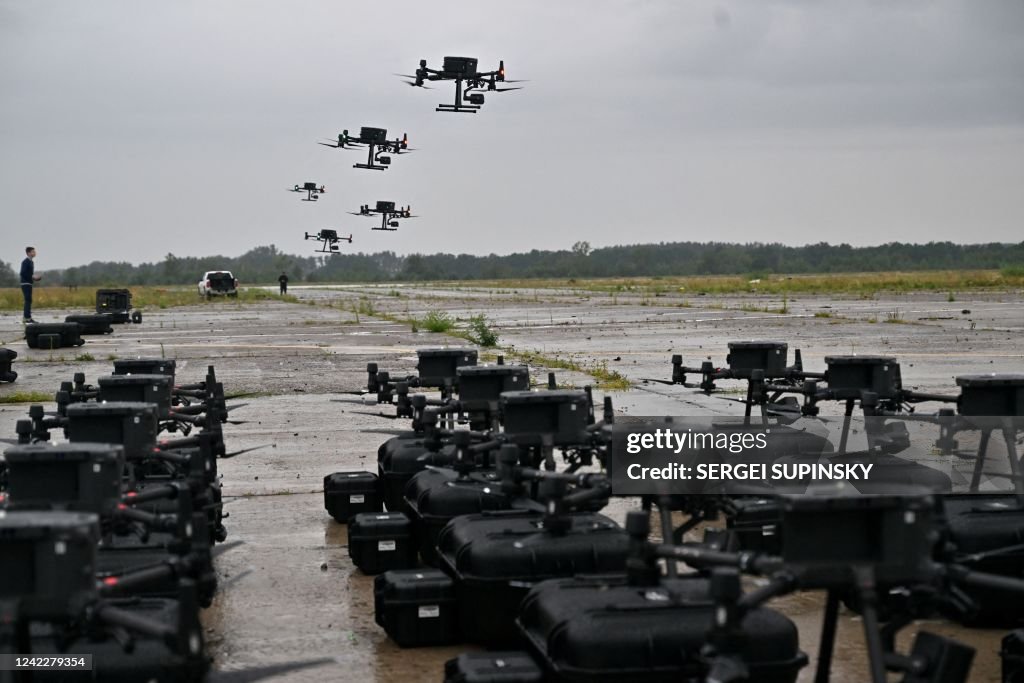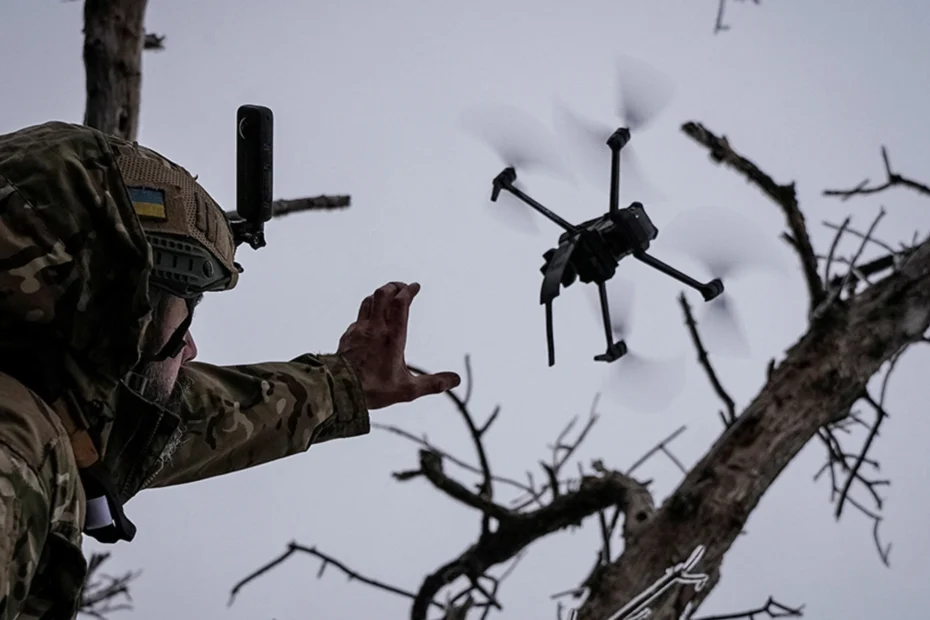Imagine a war where battles are not just fought on the ground but are directed from the skies with the help of cutting-edge technology. The ongoing conflict between Ukraine and Russia has taken a transformative turn with the introduction of drones.
This isn’t just about machines flying overhead; it’s about how these devices are reshaping strategies, influencing outcomes, and altering the way you perceive modern warfare. As you delve deeper into this article, you’ll uncover the surprising roles drones play in this war, their impact on both military and civilian fronts, and what this means for the future of global conflicts.
Are you ready to explore the sky-high possibilities and challenges that drones bring to the Ukraine-Russia war? Let’s dive in and see how this technology is changing the game in ways you might not expect.

Credit: ecfr.eu
Drones In Modern Warfare
Drones have significantly impacted the Ukraine-Russia conflict, providing real-time surveillance and precision strikes. Their ability to gather crucial intelligence and execute targeted operations has reshaped modern warfare strategies. Both sides employ drones to enhance battlefield awareness and combat efficiency.
Drones in modern warfare have transformed the battlefield, offering new capabilities and challenges. Their use in the Ukraine-Russia conflict highlights their strategic importance and adaptability. Drones have shifted the dynamics of warfare, making it more complex and technologically advanced.Understanding The Role Of Drones
Drones are not just flying cameras; they are essential tools in warfare. They provide real-time surveillance, crucial for decision-making in fast-paced environments. Imagine having eyes everywhere without risking soldiers’ lives. That’s the power drones bring to military operations. Their ability to gather intelligence and assess enemy positions from a safe distance is unmatched. This capability allows forces to anticipate and counter enemy moves effectively. You can think of drones as the scouts of the modern battlefield.Impact On Strategy And Tactics
The introduction of drones has changed military strategies significantly. Armies can now conduct precise strikes without the need for large troop deployments. This minimizes the risk to personnel while maximizing impact on the enemy. Drones also enable asymmetrical warfare, where smaller forces can challenge larger adversaries. In the Ukraine-Russia conflict, both sides use drones to level the playing field. This has forced military leaders to rethink traditional tactics. Despite their advantages, drones are not without challenges. They are vulnerable to electronic warfare and jamming. In the Ukraine-Russia war, both sides deploy counter-drone technologies to disrupt operations. This cat-and-mouse game adds a new layer to modern warfare. Operational limits such as range and battery life also restrict drones. They can’t replace human soldiers entirely but serve as valuable complements to traditional forces. How can militaries maximize their use while overcoming these constraints? The evolution of drones is far from over. As technology advances, their roles will expand beyond surveillance and strikes. Future drones may offer more autonomy and integration with other military systems. Will drones eventually dominate warfare, or remain a strategic asset? The answer lies in ongoing innovations and how they are implemented. One thing is certain: drones are here to stay, continuously shaping the future of military conflicts.
Credit: www.rferl.org
Types Of Drones Deployed
The Ukraine-Russia war has seen the deployment of various types of drones, each serving a unique purpose in the conflict. These drones have revolutionized warfare, offering new ways to gather intelligence, strike targets, and adapt civilian technology for military use. Understanding the different categories of drones used can provide insights into modern military strategies and the evolving role of technology in warfare.
Combat Drones
Combat drones have taken center stage in the Ukraine-Russia war, primarily due to their capability to deliver precise strikes without risking human lives. Imagine a scenario where traditional airstrikes might fail due to adverse weather conditions or high-risk zones. Combat drones shine in such situations, offering tactical advantages.
Take the Bayraktar TB2, for instance. Known for its effectiveness, this drone has proven its worth by neutralizing key targets. This capability raises a question: Are combat drones the future of warfare? As you ponder this, consider their growing influence on military strategies worldwide.
Surveillance Drones
Surveillance drones play a crucial role by providing real-time intelligence. They help armies track movements, gather data, and make informed decisions. Picture yourself as a commander needing accurate battlefield information. Surveillance drones are your eyes in the sky.
Models like the Orlan-10 have been utilized extensively, capturing vital imagery and data. These drones can fly over enemy lines undetected, offering a strategic edge. Their presence prompts a thought: How will advancements in surveillance technology shape future conflicts?
Commercial Drones Adapted For Military Use
The war has also seen commercial drones repurposed for military objectives. These drones often bring unexpected benefits, such as cost-efficiency and accessibility. Imagine taking a drone meant for hobbyists and turning it into a tactical tool. The possibilities are intriguing.
DJI drones are a prime example. Originally designed for photography, they have been modified for reconnaissance missions. This adaptation prompts a reflection: Could civilian technology hold untapped potential for military innovations? Your insights could uncover new avenues in drone warfare.
Each type of drone deployed in the Ukraine-Russia war offers distinct advantages. As technology progresses, so too will the strategies used in conflicts. What innovations might you expect in the next phase of drone warfare?
Strategic Advantages
The Ukraine-Russia war showcases the strategic advantages of drones in modern warfare. Drones have transformed military tactics, offering unique benefits on the battlefield. Their versatility and efficiency make them indispensable tools for both reconnaissance and combat operations.
Enhanced Reconnaissance
Drones provide real-time aerial surveillance, crucial for gathering intelligence. They can fly over enemy territory undetected, capturing high-resolution images. This enables commanders to make informed decisions quickly. With drones, military units gain a clear picture of enemy movements and positions. The ability to monitor vast areas without risking human lives is invaluable.
Precision Strikes
Drones excel in executing precision strikes with minimal collateral damage. They carry advanced targeting systems, allowing accurate hits on strategic targets. This precision reduces the likelihood of civilian casualties. By using drones, armies can neutralize high-value targets efficiently. The capability to strike swiftly and accurately shifts the balance in warfare.
Cost-effectiveness
Drones offer significant cost advantages over traditional aircraft. They require less maintenance and fewer resources to operate. Their deployment costs are lower, making them accessible for prolonged missions. Drones allow military forces to stretch budgets while maintaining effectiveness. The reduced need for human pilots also lowers risk and expense.
Challenges And Limitations
The use of drones in the Ukraine-Russia war has faced several challenges and limitations. These unmanned aerial vehicles have transformed modern warfare. Yet, their effectiveness is often hindered by various factors.
Technical Vulnerabilities
Drones are susceptible to technical failures. They rely heavily on complex systems. A single malfunction can lead to mission failure. Weather conditions also affect drone operations. Heavy winds or rain can disrupt flight patterns. This makes drones less reliable in harsh climates.
Counter-drone Measures
Both sides employ strategies to counter drones. Anti-drone technology is advancing rapidly. Jamming signals can disrupt drone communications. This renders them ineffective. Physical barriers like nets can trap drones. These measures reduce the impact of drone warfare.
Ethical Concerns
The use of drones raises ethical questions. Civilian casualties are a major concern. Drones can strike targets without human presence. This may lead to unintended consequences. Privacy issues also arise with drone surveillance. Monitoring movements without consent infringes on rights.
Impact On Battle Tactics
Drones have reshaped battle tactics in the Ukraine-Russia conflict. They provide real-time surveillance, crucial for strategic planning. This technology enables precise targeting, reducing collateral damage and enhancing efficiency on the battlefield.
The use of drones in the Ukraine-Russia war has transformed the way battles are fought. These small, unmanned aircraft have significantly impacted battle tactics. They offer new ways to gather intelligence, strike targets, and change the flow of war. What does this mean for the traditional methods of combat? Let’s dive into the impact of drones on battle tactics.Shift In Battlefield Dynamics
Drones have redefined the battlefield by offering real-time surveillance. Soldiers can now see enemy positions and movements without putting themselves in danger. This means faster and more accurate decision-making during combat. In the past, gaining intelligence meant deploying scouts or relying on satellite imagery. Now, drones provide instant updates from the sky. This shift allows forces to adapt quickly and respond to threats more effectively. Have you ever considered how knowing your opponent’s next move could change the outcome of a game? In war, this advantage can be the difference between victory and defeat.Influence On Military Strategy
Military strategies have evolved due to the capabilities of drones. Commanders can now plan operations with a new level of precision and flexibility. Drones can carry out surveillance, deliver supplies, or even engage in combat. This technology encourages a shift from large-scale troop deployments to more targeted, strategic operations. By using drones, forces can strike specific targets with minimal risk to personnel. This changes the way military leaders think about engaging the enemy. Do you think traditional military strategies will become obsolete in the future? As drone technology advances, it may push even more changes in how wars are fought. Drones are not just tools; they are game-changers. Their impact on battle tactics is undeniable, and their presence in modern warfare continues to grow. How will this shape the future of conflict? The answers are unfolding on the battlefields of Ukraine and Russia right now.
Credit: theconversation.com
Civilian Implications
Drones have dramatically changed warfare, especially in the Ukraine Russia conflict. Their use affects not just soldiers but civilians too. The presence of drones raises various concerns. They pose threats and impact daily life. Let’s examine these implications closely.
Safety Concerns
Drones in the sky can frighten civilians. People fear being targeted in their homes. They worry about being caught in crossfire. Drones can misidentify targets, causing harm. This raises questions about civilian safety. Lives are disrupted, and normalcy is lost.
Psychological Impact
The constant drone presence creates stress. People live in fear of attacks. The buzzing sound haunts them. It disrupts sleep and daily routines. Children are especially vulnerable. They struggle with anxiety and trauma. The psychological scars are deep and lasting.
International Reactions
The use of drones in the Ukraine-Russia war has drawn global attention. This new warfare tactic has sparked varied international reactions. Countries are observing the impact of drones closely. They are analyzing their role in modern conflicts.
Global Military Trends
Many nations recognize the growing importance of drones in warfare. Military experts are studying drone strategies in Ukraine and Russia. They are learning about drone technology advancements. The conflict showcases drones’ effectiveness in surveillance and strikes.
Some countries are investing more in drone research. Others are reconsidering their military policies. The Ukraine-Russia conflict is setting new military trends worldwide. It highlights the shift towards unmanned aerial vehicles in combat.
Diplomatic Responses
Diplomatic responses to drone use have been mixed. Some nations express concern over civilian safety. They call for regulations on military drone use. Discussions on international laws for drone warfare are increasing.
Other countries support using drones for defense. They argue drones minimize soldier casualties. This divergence in views affects international relations. Diplomatic talks continue to address these complex issues.
Future Of Drones In Warfare
Drones play a crucial role in the Ukraine-Russia conflict, showcasing their impact in modern warfare. Equipped with advanced technology, they provide real-time intelligence and precision strikes, altering traditional military strategies. Their use highlights a shift towards more tech-driven combat.
The Future of Drones in Warfare is rapidly evolving, particularly as seen in the Ukraine-Russia conflict. This war has demonstrated the significant role drones can play, raising questions about their future impact on global military strategies. It prompts a critical examination of how these unmanned vehicles will reshape the battlefield.Technological Innovations
Drones are becoming more advanced with every passing year. The conflict in Ukraine has showcased drones equipped with cutting-edge technology, such as enhanced AI for smarter navigation and improved payload capabilities. These advancements make drones indispensable in modern warfare, pushing nations to invest heavily in drone technology. Imagine a future where drones can autonomously decide the best course of action during combat. This could change the dynamics of warfare entirely, reducing the need for human intervention in high-risk scenarios. Such innovations are not just theoretical; they are actively being developed and tested.Evolving Military Strategies
With these technological advancements, military strategies are also evolving. Drones offer unprecedented surveillance and strike capabilities, allowing armies to gather intelligence and execute precision attacks with minimal risk to personnel. This change in strategy can alter the balance of power in conflicts. Reflecting on historical battles, one can wonder how different outcomes might have been if drones had been involved. As military doctrines evolve, you might ponder how nations will adjust their defense and offense strategies to incorporate drones more effectively. As drones become more prevalent, the ethical implications of their use also come to the forefront. What role will international laws play in governing their use? How will nations address the moral questions surrounding autonomous combat drones? These questions are crucial as you consider the future of drones in warfare.Frequently Asked Questions
How Are Drones Impacting The Ukraine-russia Conflict?
Drones are significantly altering warfare strategies in the Ukraine-Russia conflict. They provide real-time surveillance, gather intelligence, and execute targeted strikes. This technological advantage aids in precise military operations, reducing human risk. Drones also play a critical role in reconnaissance, offering insights into enemy movements and fortifications, thus shaping battlefield tactics.
What Types Of Drones Are Used In The War?
In the Ukraine-Russia war, various drones like reconnaissance, combat, and kamikaze types are used. Reconnaissance drones gather intelligence and monitor enemy activities. Combat drones engage in targeted strikes on strategic locations. Kamikaze drones, designed for one-time use, crash into targets with explosives, causing significant damage.
Why Are Drones Important In Modern Warfare?
Drones are crucial in modern warfare for several reasons. They enhance surveillance capabilities, providing real-time intelligence and reducing human risk. Drones offer precision in targeting, minimizing collateral damage. Their ability to operate in challenging terrains and conditions gives them a strategic edge, making them indispensable in contemporary conflicts.
What Challenges Do Drones Face In Conflict Zones?
Drones face multiple challenges in conflict zones, including electronic warfare tactics like jamming and hacking. They also contend with adverse weather conditions impacting navigation and operation. Anti-drone technologies, such as detection and interception systems, present additional obstacles, reducing their effectiveness and operational lifespan.
Conclusion
Drones have impacted the Ukraine-Russia conflict significantly. Their roles range from surveillance to combat. Both sides utilize drones for strategic advantages. This technology offers new ways to approach warfare. It changes how battles are fought. But it also raises ethical concerns.
Civilians face risks with drone strikes. The war’s outcome may be influenced by drone capabilities. Their use highlights modern warfare trends. Understanding drone impact is crucial for future conflicts. As technology evolves, drone usage will likely grow. This underscores the need for global discussions.
The world watches as this conflict unfolds, learning vital lessons.
